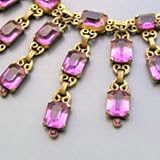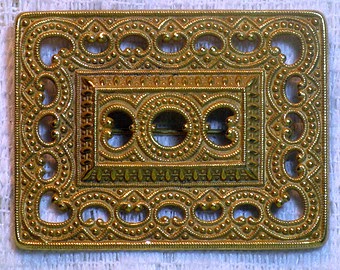Teacup courtesy of www.etsy.com/shop/Classic Endearments
One day in 1839 a customer arrived at Haviland's New York City china shop with a broken cup wishing to have it replaced. Haviland immediately recognized the quality of the porcelain but not the maker. He thought this fine type of porcelain came only from China. Perplexed, he researched the origins of the cup and discovered it came from France. He traveled to France with high hopes of finding a match to his cup.
It would be in the city of Limoges that a determined Haviland finally found the cup's match and learned of a 75 year old ongoing history of china production in the region. This was due to the discovery in the Limousine region surrounding Limoges of soil rich with deposits of kaolin and feldspar -- two principal ingredients that make hard paste, or high fired porcelain, Kaolin is a type of earth and feldspar is a mineral that provides strength to the paste and, when fired at a high temperature, becomes translucent. The finished result is an object that is vitreous, or glass like, and what china collectors have long admired in fine porcelain china. As a result, Limoges has been home to numerous porcelain manufacturers over several centuries and today the name is synonymous with high quality porcelain.
Plates courtesy of www.etsy.com/shop/PeriodElegance
Serving Dish courtesy www.etsy.com/shop/GrandVintageFinery
Haviland and Company established a foothold in Limoges in 1842 and by the late 1800s created one of the largest and best factories there, making porcelain for the American market. For nearly 25 years prior to establishing the Limoges factory, Haviland had run his own New York City retail and import china business and so had the experience to make the new factory a success.
Haviland not only recognized the superior quality of the hard paste porcelain, he also sought to import and decorate dishes with patterns, styles and techniques that appealed to Americn aesthetics. As a result, he achieved extraordinary success and fame in Europe and America.
He shipped large quantities of undecorated, or "blank," Limoges porcelain to America and created studios to import and decorate them. He employed his own artists under the direction of Felix Brocquemond, a renowned ceramics decorator. Brocqemond entertained artists such as Monet, Manet and the Damousse brothers, who influenced many of the floral designs.
Haviland porcelain was a tremendous success the 1853 World's Fair in New York City; it caught the attention of the White House, which began using the china. Americans loved the Haviland decorated products and the demand for his china increased greatly. David Haviland quickly became known as a leader in the making of fine china and instrumental in creating the American market for Limoges porcelain, thus making it a household name.
Plates courtesy of www.etsy.com/shop/PattysPorcelainEtc
Today's fine china collectors are delighted when they discover a piece with the renowned Haviland mark. That mark represents a rich history that spans four generations of enterprising Haviland porcelain makers. They established the most distinctive, best quality porcelain and set new artistic achievements in the making of fine china. The next time you are out treasure hunting and find a piece of Haviland, you may find your heart pounding. If the piece speaks to you then you should surely snatch it up!
Resources: Collector's Weekly

















.jpg)



